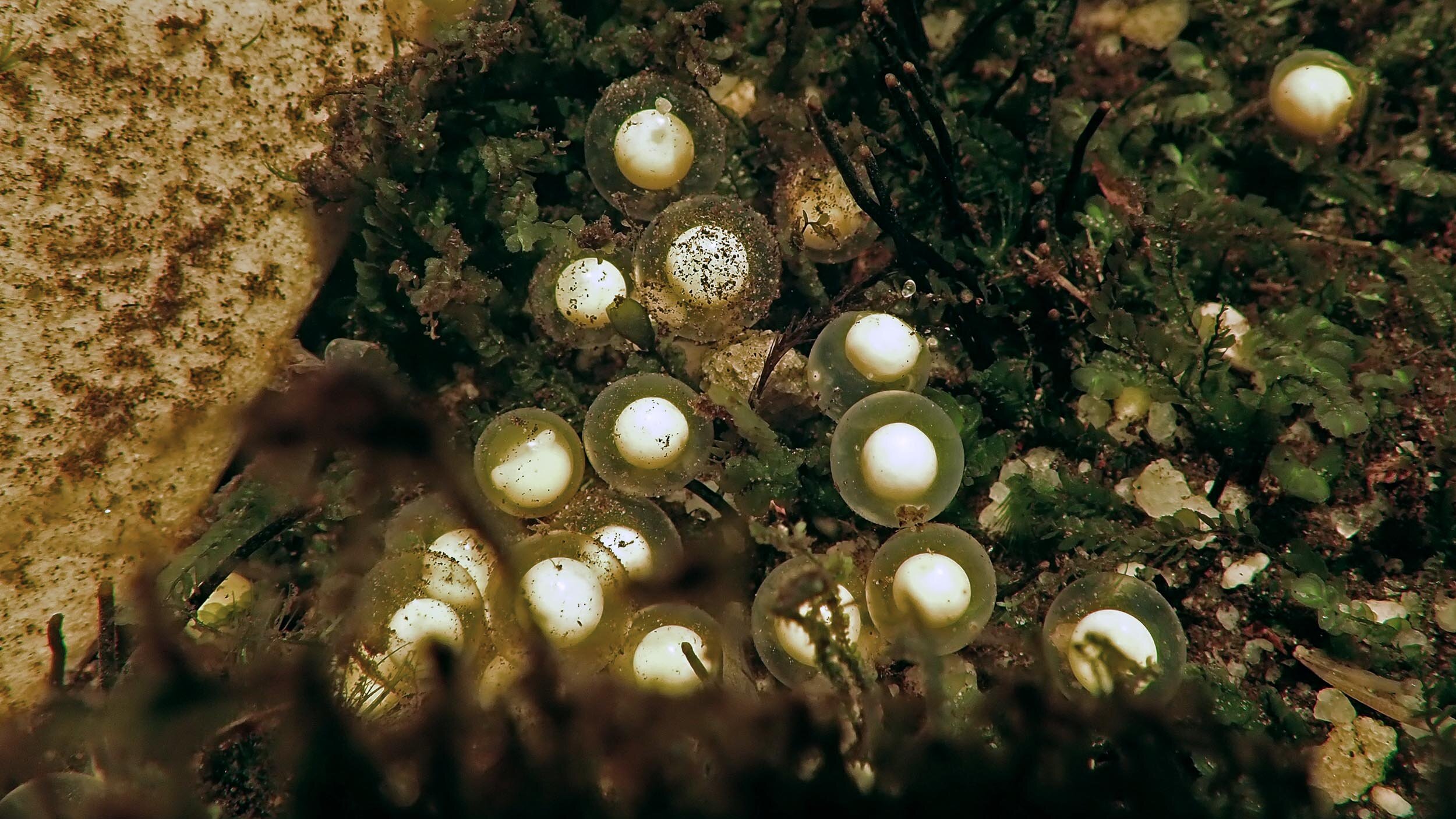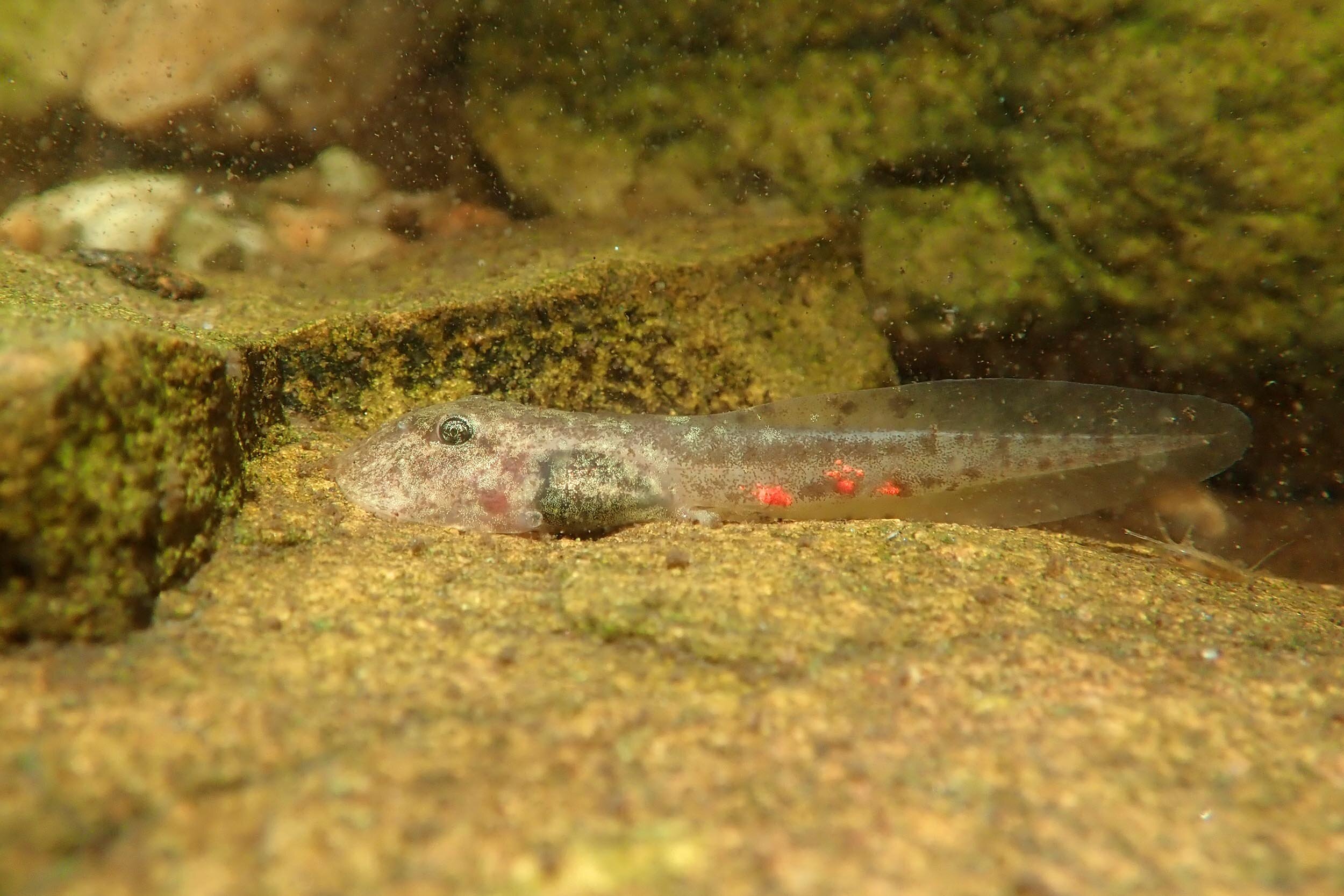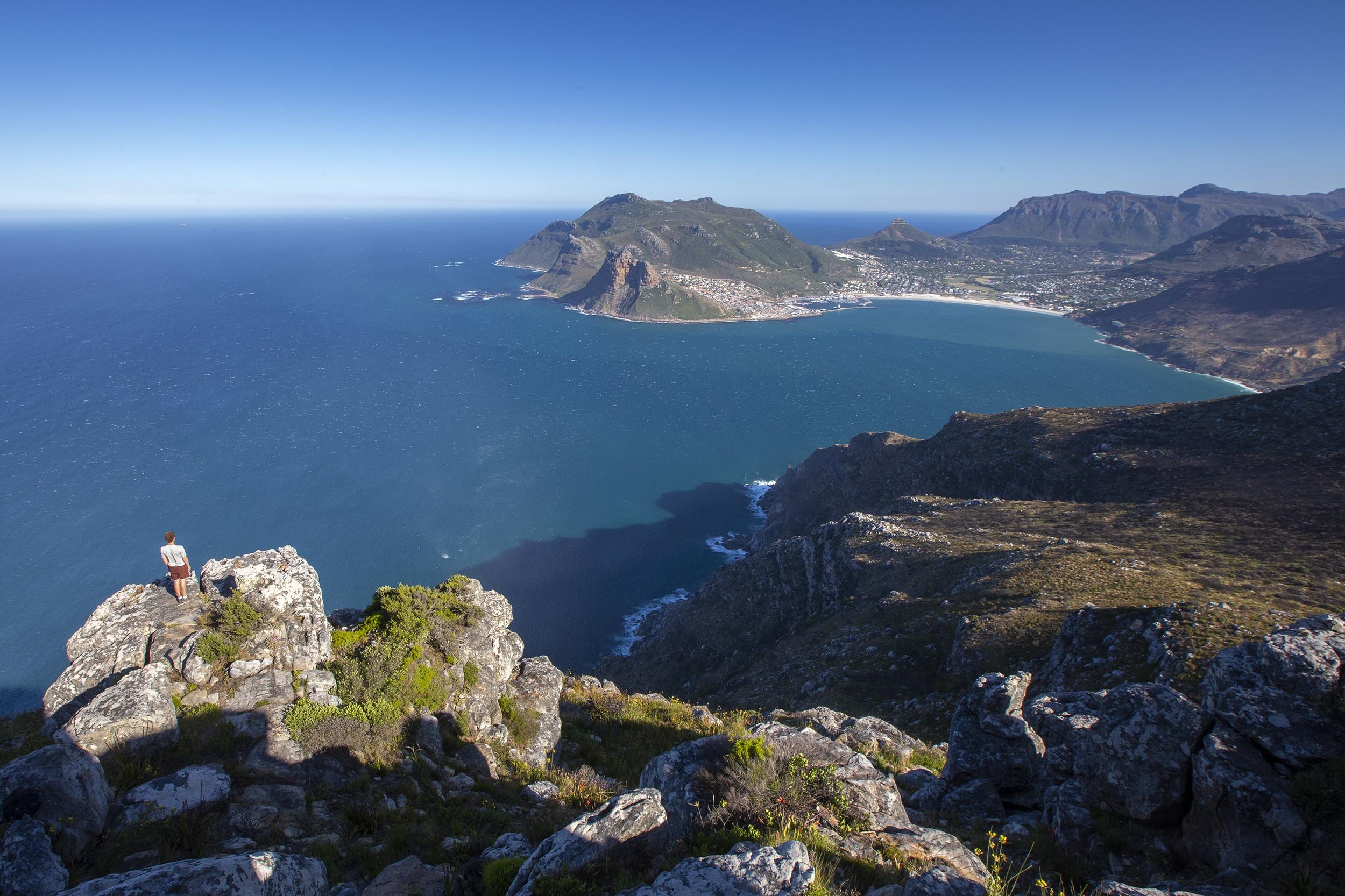
Ghosts of Table Mountain
Documentary Film
Ghosts of Table Mountain reveals the secret lives of the critically endangered Table Mountain Ghost Frog and other freshwater creatures, with the hope of inspiring collaborative efforts to restore critical stream habitats.

Table Mountain stands isolated; a rocky beacon of biodiversity in a bustling city.
This Seventh Wonder of the World has stood for over 600 million years.
Up until the 1800s, leopards still roamed its slopes, lions its plains and hippos its rivers.
Although humans have altered much of the mountain’s ecosystems, it’s fairytale gorges and tea-coloured streams are still home to an iconic but elusive amphibian.

Table Mountain Ghost Frog
“This unique amphibian is only found in eight streams on Table Mountain and nowhere else in the world.”
— Josh Weeber, Endangered Wildlife Trust

Adult frogs lay their eggs in rocky pools.
Once the tadpoles emerge, it can take over a year for them to metamorphose into frogs.
Their unique sucker mouth helps them cling to the underside of boulders during winter torrents.
However, the same mouths make tadpoles heavily reliant on clear, sediment-free pools, and are therefore vulnerable to disturbance.




“Adult frogs use their long limbs and large toe discs to access elevated cracks and mossy cascades, which are hard to access and provide refuge from most predators.
Together with the frogs cryptic colouration, it makes them tricky to find.”
— Josh Weeber, Endangered Wildlife Trust

The Table Mountain Ghost Frog has vanished from two streams, and now most of the 8 remaining streams are under threat.
Weirs
Five of the eight remaining streams are compromised by erratic flow rates due to weirs and dams, decreasing the system’s ability to flush sediment downstream. The weirs drastically alter the structure of pools and make it difficult for tadpoles to survive.
Invasive alien plants
Some of the streams are infested with poplars and Australian blackwood, which is a fast-growing invasive that is water thirsty and chokes up stream channels. This alters the structure of pools and increases the sediment load.
Sedimentation
A build up of sediment can result from reduced flows - due to weirs and/or alien plants - and the presence of people or dogs. Foot traffic along hiking trails that cross streams stirs up sediment, disturbs tadpoles and eggs and stirs up sediment.

This story is a collaboration with Joshua Weeber.
He has spent the last year studying and photographing the lives of ghost frogs.
Josh is a Table Mountain Field Officer in EWT’s Threatened Amphibian Programme and leads the Table Mountain Freshwater Ecosystems Project.
This project was developed by the South African National Biodiversity Institute and is co-ordinated in partnership with the Endangered Wildlife Trust. Key collaborators include SANParks, University of Cape Town and Freshwater Research Centre. The project is funded by the Table Mountain Fund and The Mohamed bin Zayed Species Conservation Fund.
“The aim of this project is to implement research-based conservation actions that will ensure the survival and restoration of these critical habitats and safeguard the species that rely on them.”
Science
Finding Ghosts
Despite being Critically Endangered for the last 30 years very little is known about the Ghost Frog’s habitat requirements, life history or population size. We aim to understand the specific requirements of Ghost Frog tadpoles, track how they utilize different pools and establish how sensitive they are to physical changes in their habitat. This information will act as a guide to restore critical habitats and enable us to accurately address the threats that are causing these frogs to disappear.
Adult Ghost Frogs are elusive and cryptic, making them hard to study. Using bioacoustic monitoring we hope to discover the breeding cycles and population size of these animals. We are also implementing long-term habitat monitoring protocols for the streams themselves, establishing a baseline against which to compare future change, and track restoration actions.
Conservation
Conserving Ghosts
Ultimately this project aims to develop research-based conservation actions to ensure the long-term survival of the Table Mountain Ghost Frog. We cannot achieve this alone and are working to cultivate partnerships that will result in coordinated actions that integrate this threatened species into land use planning and management decisions. A Table Mountain Ghost Frog Action Plan was developed to galvanise research and conservation actions at an ecosystem level.

Documentary Film
Ghosts of Table Mountain
Directed by Jeremy Shelton and Otto Whitehead
These beautiful and elusive creatures are rarely seen by the public and many of those who enter Table Mountain National Park are completely unaware of their existence. Many mountain users are also unaware of the threats that are impacting the rivers and streams they themselves visit and enjoy. This film aims to take the viewer on an educational journey of discovery, sharing a snapshot into the lives of Table Mountain Ghost Frogs, caddis-flies and Cape galaxias. It reveals their delicate life cycle and the dynamic ecosystem they rely on. It also highlights the human-related impacts that are slowly degrading these habitats and shows how, through dedication and collaboration, successful conservation can be done to safeguard this species and the broader ecosystem for future generations to come. This is a story of conservation, collaboration and hope.
In collaboration with Josh Weeber and Steve Benjamin














